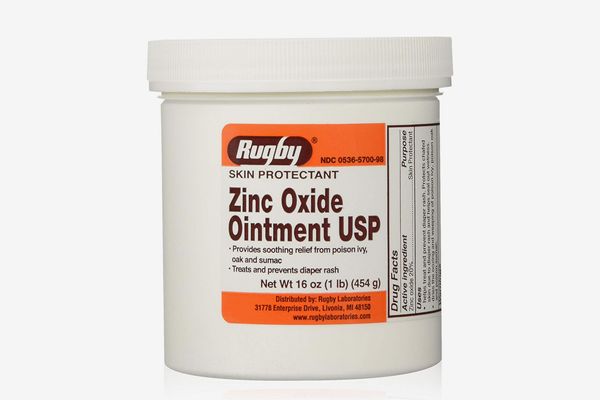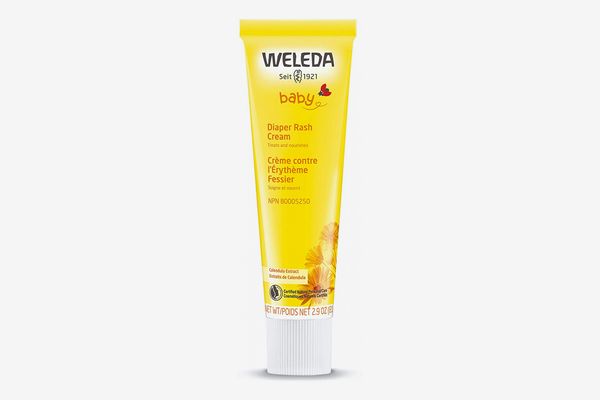
Most babies experience diaper rash, which develops when their skin is exposed to dampness and irritants (like urine and feces) from a dirty diaper. Prolonged exposure to these irritants can cause a breakdown of the skin barrier, according to triple-board-certified dermatopathologist Dr. Gretchen Frieling, resulting in redness, dry patches, irritation, and, if left untreated for a prolonged period of time, infection.
The good news is that there are steps you can take to help prevent diaper rash in the first place or, if a rash has already developed, ways to treat it at home before it becomes even more uncomfortable for a child (and more of a nuisance for a caregiver). “Ideally, you’d do frequent diaper changes,” explains pediatric dermatologist Dr. Brittany Craiglow, an adjunct assistant professor of dermatology at Yale School of Medicine. “But a good diaper cream as a barrier goes a long way.” With so much to choose from in the baby-product aisle, though, you might (understandably) be confused about whether to go for a fancy diaper-rash cream or just stick to the basics. To find the best products for keeping diaper rash at bay, we asked five dermatologists, two of whom are pediatric derms, for their recommendations. Read on for all the things they say to use — from the best baby wipes to diapers to diaper-rash creams — and their tips on how best to use them, which we’ve conveniently packaged as a step-by-step guide to preventing and treating diaper rash.
Keep the skin clean
Whether you’re trying to prevent diaper rash from forming or treating it after it develops, it is essential to keep the area clean, according to our experts. “When changing the child’s diaper, clean the soiled area gently with a soft, moistened towelette or a cotton wet wipe,” says Frieling. “Avoid rubbing too harshly and avoid alcohol, as it can dry out the baby’s skin and aggravate any irritations.” But Craiglow points out that many common baby wipes can cause irritation if they contain preservatives or fragrances, which is why she suggests using wipes that contain gentle, all-natural ingredients, like WaterWipes. “They’re mostly water but have a tiny bit of grapefruit-seed extract in them, so they’re not adding anything extra,” she says. If you find even the gentlest of wipes to be too harsh for your baby’s bum, Dr. Adarsh Vijay Mudgil, the founder of New York City’s Mudgil Dermatology, and Dr. Deirdre Connolly, of Schweiger Dermatology Group in Garden City, New York, both suggest you avoid wipes altogether and instead rinse only with warm water (using a squirt bottle for convenience, if necessary).
Regardless of whether you swaddle your child in cloth or disposable diapers, our experts say changing diapers frequently can go a long way in preventing diaper rash. As Connolly puts it, “Change diapers often, even if they are just wet. This decreases moisture, which can exacerbate a rash.” Frieling adds that you also want to avoid wrapping the diaper too tight, “as the added friction can irritate the skin.”
If diaper rash develops anyway, two of our experts say using disposable diapers may help get rid of it faster. “Cloth doesn’t wick away moisture from the skin as quickly,” explains pediatric dermatologist Dr. Lindsey Bordone, an assistant professor of dermatology at Columbia University Medical Center. Mudgil agrees that disposable diapers are superior to cloth when it comes to dealing with diaper rash. Bordone told us diapers from popular brands like Pampers and Huggies have a gel liner that absorbs moisture so kids don’t stay damp. (You can read more about the “superabsorbent gel” found in Pampers here). These Pampers for newborns — which are are hypoallergenic and free of chlorine, bleaching, fragrances, parabens, and latex — even have an indicator that lets you know when the diaper is wet. Another tip, from Frieling: The speed at which you change the diapers can make a difference. “The quicker you can change them can prevent the rash from getting more irritated,” she says.
Keep the skin dry
Our experts emphasize that, in addition to keeping your baby’s bum clean, it’s very important for the child’s skin to be dry before you apply diaper cream, so you’re not inadvertently locking in moisture (thus creating an environment that can breed bacteria, according to Frieling). To help ensure a baby’s skin is dry enough, you can use a soft washcloth like this one made from cotton muslin. Patting the area dry rather than rubbing the towel on the skin is also a good idea, adds Frieling. Craiglow agrees: “What I do with my kids at home is to take a dry cloth or towel or washcloth and pat their skin dry with it, so you’re getting off any extra moisture.”
Another way to help stop a rash from developing is to keep the baby diaper free for a few minutes. “You can lay the child on a towel and wait a moment before putting a new diaper on, giving the skin a chance to breathe,” says Frieling. Bordone tells us that sometimes she will even recommend gently drying the area with a hair dryer — but only on the cool setting.
Apply a diaper-rash cream
After your baby has been cleaned and dried, and with a fresh diaper at the ready, it’s time to apply a diaper-rash cream — which our experts note is safe to apply every time you change a diaper. When it comes to choosing one, our experts all agree that creams containing zinc oxide, which soothes and acts as a barrier against irritants, are the most effective at both preventing and treating a rash. Mudgil calls zinc oxide the best over-the-counter treatment on the market, and Connolly agrees. “The most important thing to look for in a cream is one that acts as a thick barrier to protect against irritants such as urine and feces,” she explains. “And creams that contain zinc-oxide paste (the thick, adherent white paste) work quite well as barrier creams.”
While Connolly says a generic 40 percent zinc-oxide paste works well, she cautions that it is quite thick at that percentage. So she suggests opting for a brand-name cream like Triple Paste, which contains 12.8 percent zinc oxide, because it can be easier to apply and similarly effective even with a smaller percentage of the active ingredient. Craiglow, another fan of Triple Paste’s diaper-rash cream, agrees. “It’s a much lower percentage of zinc oxide, but it has petrolatum, and the two of them together make a really nice paste,” she says. “It also contains oat-kernel extract, which is anti-inflammatory.” Frieling also cites Triple Paste as an effective zinc-oxide cream. As far as how much to apply and how, Craiglow has a couple of tips: “What I tell parents is to put enough on so that the baby’s butt is still white the next time they change the diaper. It’s basically like frosting a cake.”
For a less expensive option, Mudgil, Frieling, and Bordone all recommend Desitin Daily Defense, which contains a similar amount of zinc oxide (about 13 percent) as Triple Paste. Also like Triple Paste, this diaper-rash cream is free of parabens, phthalates, dyes, and fragrances. “This has been a gold standard for decades. My parents used it on me,” says Frieling — and with good reason. “In a clinical study, 90 percent of babies with diaper rash had noticeable relief within 12 hours with the use of this cream,” she explains.
If you’re treating a more severe case of diaper rash, consider something a little stronger, like this 20 percent zinc-oxide ointment from Rugby Laboratories, which Bordone recommends. She likes it because it’s so thick and white you’ll know exactly where you’ve rubbed it in and when it’s coming off. Bordone told us she has used this on her own child, noting, “You can use it for chafing skin with diaper rash or other forms of wetness.”
For sensitive skin, Frieling recommends Weleda’s diaper-rash cream. In addition to pharmaceutical-grade zinc oxide, it contains natural ingredients including lanolin and calendula-flower extract (two more ingredients she specifically named as helpful in treating diaper rash), plus beeswax, chamomile-flower extract, and sweet-almond oil — all of which have gentle and soothing effects. The formula is also free of synthetic preservatives, fragrances, and petroleum.
For a slightly less expensive diaper-rash cream with natural, plant-based ingredients, Connolly pointed us toward Butt Paste. Free of dyes, petrolatum, parabens, and preservatives, this cream delivers the soothing effects of aloe (a third ingredient Frieling likes for treating diaper rash) in addition to zinc oxide. It also includes beeswax, carnauba wax, and castor oil.
While the above diaper-rash creams can be used for both prevention and treatment, if you’re looking for something specifically to treat an existing rash, Frieling recommends this cream from A+D. “The ointment treats itchiness and dryness using dimethicone, to address the discomfort of an itchy rash, and aloe to hydrate the skin,” she says. Like all the other diaper-rash creams on this list, this one contains zinc oxide and “works as a barrier between a wet or soiled diaper and the child’s skin, making space for the skin to heal,” according to Frieling. If a rash doesn’t improve with diaper-rash cream alone, Mudgil says it’s time to see a doctor. Connolly agrees: “If the steps above are not working and the rash worsens, see a dermatologist or pediatrician.”
The Strategist is designed to surface the most useful, expert recommendations for things to buy across the vast e-commerce landscape. Some of our latest conquests include the best women’s jeans, rolling luggage, pillows for side sleepers, ultra-flattering pants, and bath towels. We update links when possible, but note that deals can expire and all prices are subject to change.
Every editorial product is independently selected. If you buy something through our links, New York may earn an affiliate commission.















